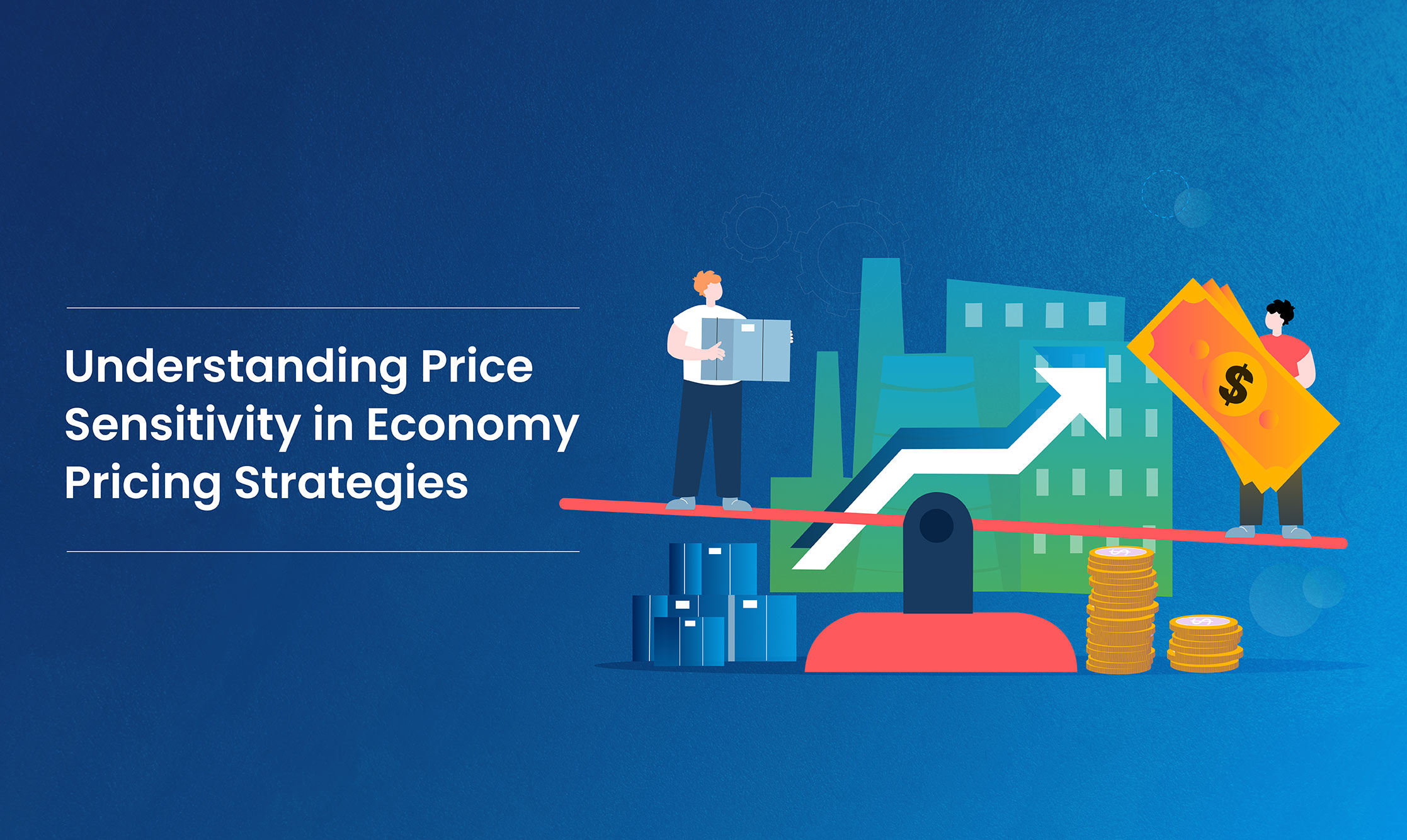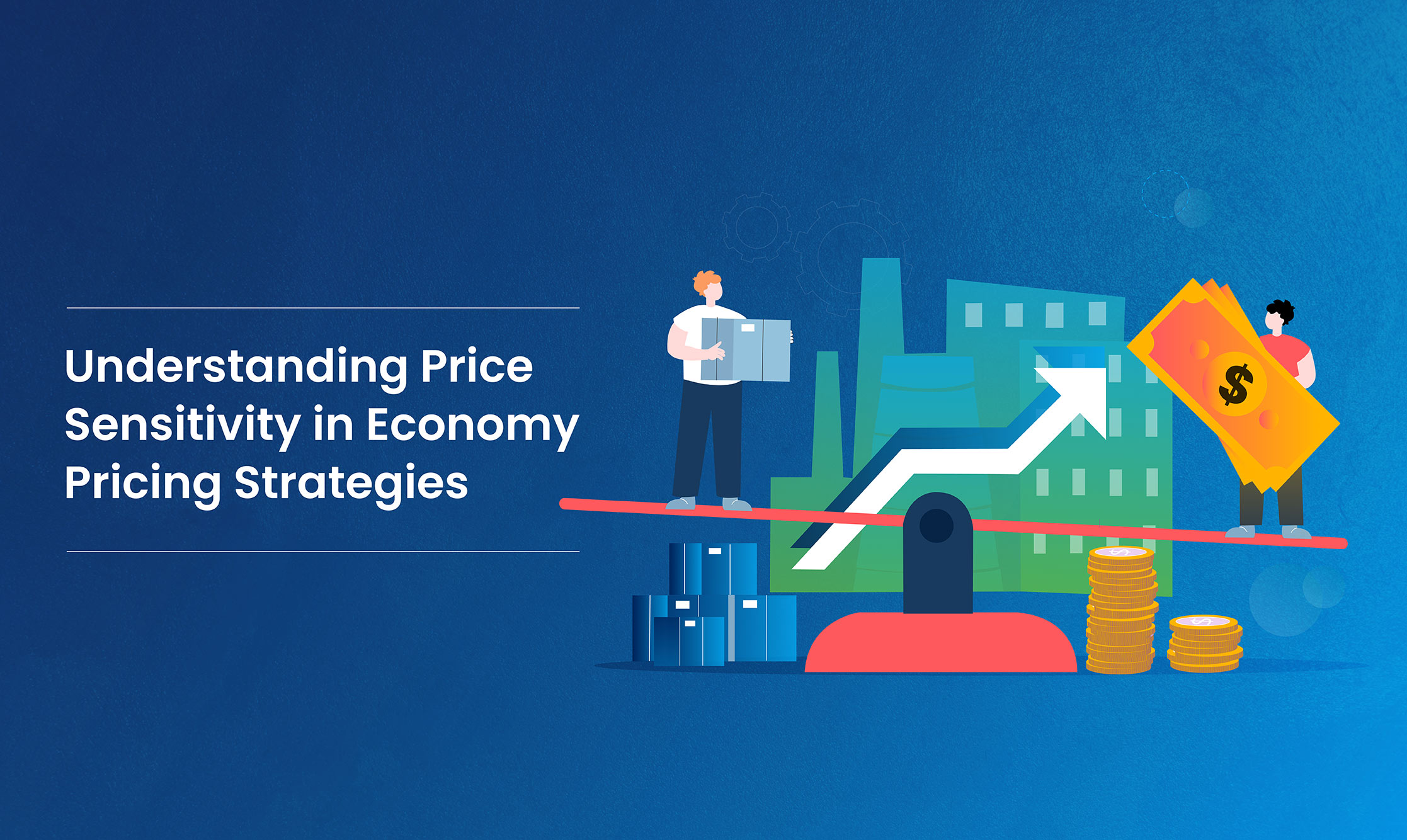Introduction
When a person has to choose between two similar products, price often becomes the deciding factor. Think of it! Wouldn’t you choose the cheaper alternative to save some quick money? As a business, you can use this natural tendency to sell more products and make more profits.
The pricing strategy of keeping the sale prices lower to sell more products is called an ‘economy pricing strategy.’ These products are marketed as ‘no-frills products’ or ‘pocket-friendly products’. The sale price is decided by adding the production costs and the expected profits.
If you wish to price your products at lower rates through economic pricing, you must understand various factors that play a role in pricing. When it comes to economy pricing, ‘price sensitivity’ is an essential concept.
Understanding Price Sensitivity
When the price of a product or service is changed, the demand for that product also changes. For example, when an expensive clothing brand starts to offer a sweater for 50% off, the demand for that sweater will suddenly rise. However, in some cases, the demand for a product rises as it becomes more expensive. Luxury bags and diamond ornaments fall into this category. Price sensitivity measures how much the demand changes with respect to a change in price.
In Economics, price sensitivity is called’ price elasticity,’ and it is derived from a formula.
Price Sensitivity = Percentage change in quantity demanded / Percentage change in price
This formula is only theoretical. In real life, the data regarding price and customer responses is complicated and tremendous. Most businesses use software, automated tools, and AI tools to compute price sensitivity.
For example, Rubick.ai’s AI-powered Pricing Intelligence Solution helps you make informed pricing decisions. It assists you by performing various tasks like:
- Curating AI-driven insights about your competitors’ pricing strategies and strategy changes.
- Provide a comparison of your product pricing with those of your competitors and track any price movements.
- Comparing the text, image, brand identity, and price of your products with those of your competitors.
- Provides insights about discounts, inventory, market trends, and pricing strategies.
Importance of Price Sensitivity in Economy Pricing Decisions
Every time you tweak the prices of your products or services, your customers are going to react to it. Price sensitivity helps you measure just how much they are going to react. You can use this information to make decisions about what changes to make in your product’s pricing. When it comes to economic pricing, price sensitivity becomes even more important. If you want to increase your prices even slightly, you have to be careful. If your prices go beyond a certain level, the demand can drop drastically as customers are very sensitive towards prices.
While making pricing decisions, you have to arrive at a point where the change in the pricing of your product will not affect its demand at all. This point is termed as ‘equilibrium’ in the language of Economics. This is easier said than done because you may not be able to measure precise price sensitivity. However, with accurate data, you can get close to it and minimize the fluctuations in your product’s demand due to price changes.
Price sensitivity also helps you decide whether an economic pricing strategy is suitable for your business or not. For example, a brand that makes high-quality skincare products targets affluent customers. As these target customers will not be very sensitive to price changes, the economy pricing strategy is not suitable for this brand.
Common Challenges in Considering Price Sensitivity in Pricing Decisions
Price sensitivity is a highly useful tool in making economic pricing decisions. However, using it while making pricing decisions can be challenging. Here are some common hurdles that you may face.
- Gathering accurate data- To consider price sensitivity, you need to gather data about a product’s demand and prices. Collecting a database of reliable and factually correct information is a major challenge.
- Tracking dynamic markets- Markets change every second of the day. Market conditions change due to changes in customer tastes, habits, and actions of competitors, along with innumerable other factors. Tracking the frequent changes happening in a huge market is quite challenging.
- Calculating price sensitivity accurately- Computing price sensitivity with accuracy is difficult because of the complex and humongous dataset. You can track price changes and the subsequent demand changes. However, the reasons behind the changes in demand are mixed. The demand is not affected only by prices. A lot of factors, like changes in trends, changes in customer preferences, social media, marketing strategies, and so on, influence the demand. It’s difficult to separate the changes that happened only because of the changes in price.
Practical Tips To Overcome These Hurdles
When tackled smartly, you can use price sensitivity successfully as a tool for making your economy pricing decisions. Here are some helpful tips to overcome these challenges.
- Embrace Artificial Intelligence- We are living in the world of Artificial Intelligence and automation. When Deloitte surveyed AI, 82% of the respondents said that AI has increased their job satisfaction and has enhanced their performance. Consider using AI tools in your business to help you make better pricing decisions.
- Select the right software tool: There are hundreds of AI tools in the market. Devote some time to conducting thorough research about which one is the best for your business. The right tool will help you automate the process of gathering competitor’s data, tracking market fluctuations, and suggesting pricing strategies based on the data. Check if you can get free demos or free trials of these software tools before buying them. Choose a powerful and trustworthy tool like Rubick.ai’s Pricing Intelligence Tool to make pricing decisions easier.
- Understand your customers: The price sensitivity of your products depends on the behavior and psychology of your customers. Be clear about who your average customer is and try to understand their psychology about pricing before making pricing decisions. When you adopt an economic pricing strategy, your customers will be very price-sensitive. You can understand their behavior through customer data analysis, statistics, and reports. You can use AI tools for this aspect as well.
Conclusion
An economic pricing strategy is a great tool for entering new markets, increasing sales volume, and attracting new customers. However, making pricing decisions using this strategy can be tricky. You could be perceived as a low-quality brand, or your margins could be very low due to the economy’s pricing. Understanding the price sensitivity of your customers is helpful for balancing price, quality, and margins. However, as we saw above, a lot of factors influence price sensitivity, and this has to be computed carefully.
Use a powerful and trusted AI solution like the Pricing Intelligence by Rubick.ai to make your pricing decisions easier. It can inform you about the pricing strategies of your competitors, perform seller-level analysis, track the pricing movements of competitors, and provide valuable insights about market trends and discounts.

